Ever wondered why your happy pup turns anxious or even nauseous once the car engine fires up? If you’re searching for practical ways to calm your dog during car rides, you’re not alone. Understanding how your dog car experience shapes their behavior can be the key to unlocking stress-free road trips. Read on as we demystify dog car anxiety with actionable steps, expert-backed tips, and the secrets to helping your best friend feel safe and calm on every journey.
Is Your Pup Unsettled in the Car? Discover Why Dogs Struggle with Car Rides
Many dogs experience travel anxiety and motion sickness during car rides, but with the right approach, these challenges can be managed effectively.
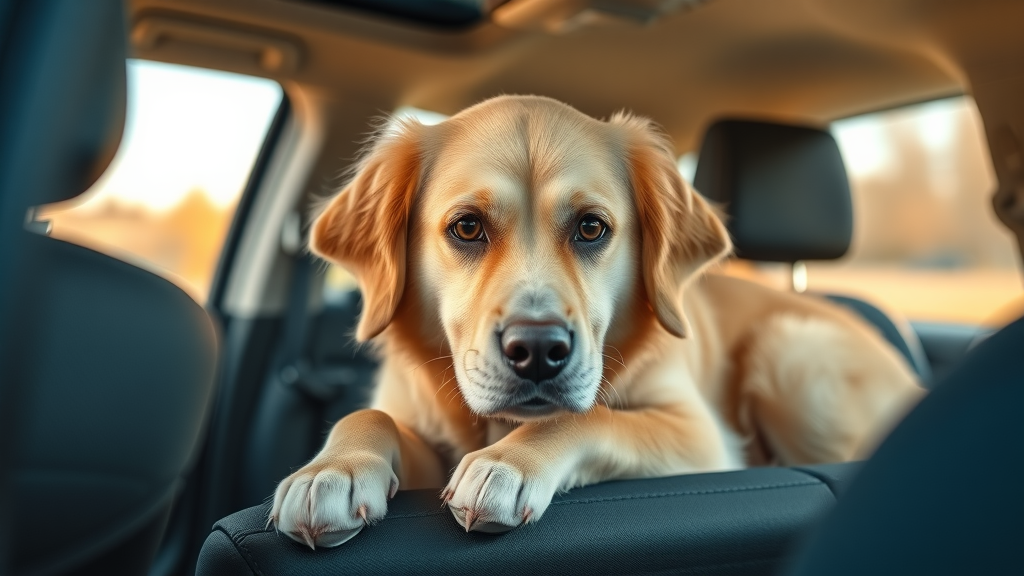
-
Common signs of car anxiety in dogs: panting, whining, trembling, drooling, pacing in the back seat, or trying to escape.
-
Why car rides can trigger anxiety, fear, or excitement: unfamiliar movements, sounds, or previous negative experiences.
-
How car travel impacts your dog’s behavior: Even dogs love to ride when there’s a positive association, but some become overwhelmed by the unpredictability of car travel, especially if trips involve visits to the vet instead of a fun place like the dog park.
Most dogs display clear signs if a car ride triggers anxiety. Their body language may shift noticeably—ears back, tail tucked, or reluctant to even approach the car door. Many dogs react to the sound when you start the car , associating it with past discomfort. This negative association can linger, especially after early experiences with car sickness or distress, leading to entrenched travel anxiety. Recognizing these signals allows you to intervene early and teach your dog a more positive, comfortable response.
How Do I Calm My Dog During Car Rides? 9 Proven Tips
Prepare Your Dog for Car Travel and Prevent Travel Anxiety
-
Teach your dog to associate the car with positive experiences: Give your dog treats inside the car, sit in the car together, or offer their favorite toy. Make the car a good thing by pairing it with rewards, ensuring your dog feels safe and optimistic about riding in the car .
-
Gradual desensitization and short, calm rides: Start with brief sessions just sitting in the car parked, then progress with short trips around the block. Increase distance closer and closer to your destination, always aiming for success to build confidence. Short rides to the dog park or a fun place reinforce the positive association .
-
Why riding in the car needs positive reinforcement: Reward calm behavior before, during, and after each car ride . Use praise, treats, or playtime so your dog learns that car travel brings enjoyable outcomes.
Making the car ride fun rather than scary takes time and patience. Begin your dog training with rewards like treats and their favorite toys every time they approach or enter the car. Over time, extend the length of rides, always ending the journey with a reward to reinforce calm, happy feelings about car travel . Small steps can make a big difference, especially with a nervous or previously car sick dog.
Comfort, Safety, and Reducing Motion Sickness in Car Rides
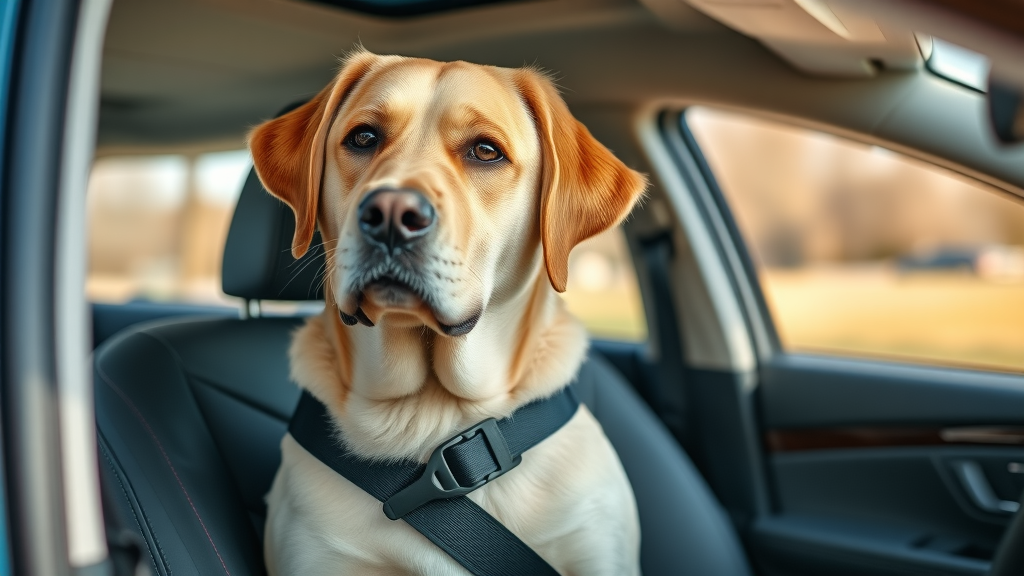
-
Secure your dog with a seatbelt harness or a crate: Dogs should never ride unrestrained in the car. Harnesses or crates protect them and make the back seat a comfortable, safe zone, preventing sudden stops or sharp turns from causing fear.
-
Keep the car well-ventilated and temperature-controlled: A slightly open window for fresh air and a comfortable temperature help prevent overheating and ease anxiety.
-
Ways to avoid motion sickness and car sick episodes: Keep car motion smooth and steady, avoid sudden stops, and limit food or water just before travel. Use comfort items like a favorite blanket to help your dog feel secure inside the car.
Safety and comfort are top priorities to prevent motion sickness and reduce car anxiety . Seatbelt harnesses or secured crates keep your dog safe and contained, providing a familiar territory within the larger moving vehicle. Keeping air flowing, maintaining a cool car interior, and driving gently all help prevent nausea. If your dog is prone to car sickness , position them in the back seat where there’s less jolting, and keep their eyes forward to reduce disorientation.
Pre-Ride Ritual: What to Do Before Riding in the Car
-
Light exercise to reduce travel anxiety: Take a brisk walk or play at the dog park before heading out. This releases pent-up energy and helps your dog settle more quickly for the journey.
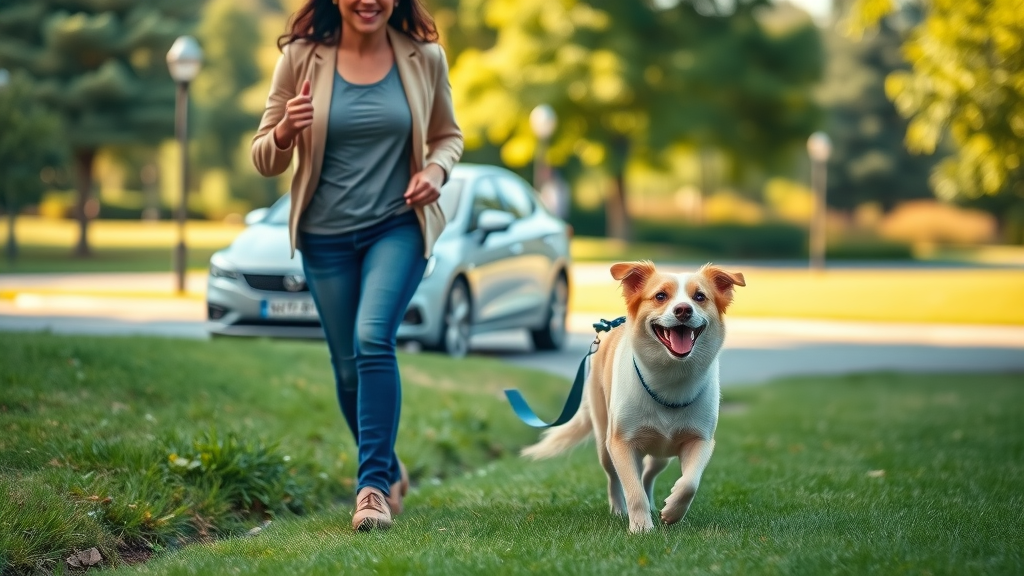
-
No food for a few hours if your dog is prone to motion sickness: An empty stomach lessens the risk of vomiting or queasiness during the car ride.
-
Potty breaks before departure: Allowing your dog to relieve themselves before a car ride prevents discomfort and the urge to go while riding in the car.
A little preparation goes a long way before car travel. Exercise not only calms your dog but also helps reduce stress hormones that can trigger travel anxiety . For pups with sensitive stomachs, avoid heavy meals before travel to cut down on car sickness . Don’t forget a potty break—dogs will focus better on enjoying the ride if they’re comfortable and don’t need to search for a spot to relieve themselves mid-trip.
Comforting Your Dog During the Journey in the Dog Car
-
Favorite toys, blankets, or items with familiar scents: Surround your dog with their belongings to create a home-away-from-home vibe, reminding them of comfort and security from their space.
-
Play calming music or sounds: Soft tunes or even calming dog playlists can drown out unfamiliar or startling car noises, helping your dog feel at ease.
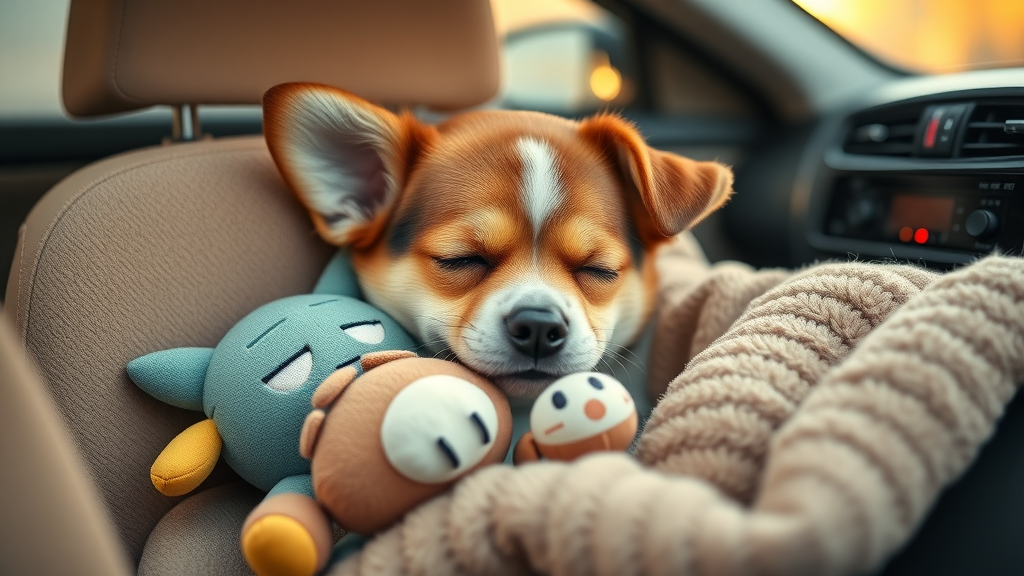
-
Maintain a calm demeanor for your dog to feel secure: Your attitude in the car matters! Speak in a relaxed voice and limit excitement to help your dog mirror your calm energy.
Keeping your dog comfortable during the trip centers around providing familiar objects and consistent reassurance. A favorite plush toy, beloved blanket, or an item of your clothing can make the inside the car feel safe and familiar, reducing stress triggers. Calming music also eases tension, creating a soothing atmosphere. Most importantly, your relaxed and patient attitude can help your dog associate the car with a sense of safety and calm during every car ride .
Practice Makes Perfect: Routine and Positive Car Travel Habits
-
Schedule regular but brief car trips: Short trips—even just around the block or to a close dog park —help your dog learn that not every drive is a big event.
-
Reward calm behavior with treats and praise: Whether your dog manages to sit in the car quietly or stays calm during a longer ride, reinforce it consistently.
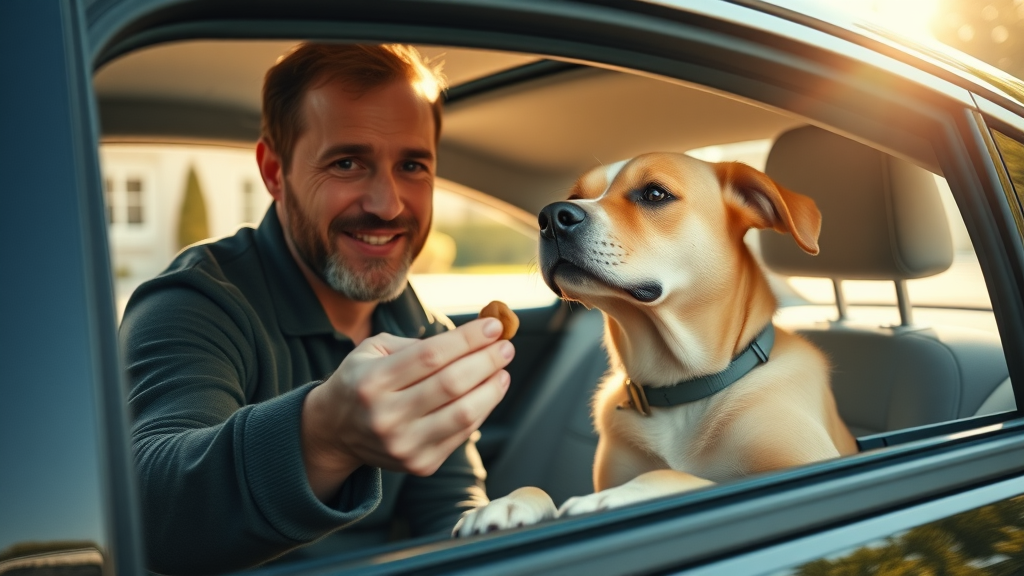
-
Keep up with positive reinforcement: Over time, regular rewards and a predictable routine will help build a confident, happy traveler, reducing car anxiety and motion issues.
Consistency is the secret to overcoming car anxiety and developing positive travel habits. Frequent, pleasant drives paired with treats and praise teach your dog that sitting calmly in the car leads to good things . Make every car ride an opportunity for your pup to learn and grow confident, ensuring their comfort and safety for every journey ahead.
Understanding Motion Sickness in Dogs During Car Rides
What Is Dog Motion Sickness and Why Does It Happen in Car Rides?
Motion sickness in dogs is a common cause of car ride distress, especially for puppies or dogs not used to car travel . This happens when movement disrupts the balance mechanism in their inner ear, making your pup feel dizzy, nauseous, or even queasy. Puppies, in particular, are more commonly car sick as their balance is still developing, but even adult dogs can be affected—especially if anxiety layers onto the physical discomfort. Recognizing the key signs early—drooling, whining, yawning excessively, or actual vomiting during or after car rides—helps you intervene with effective solutions.
|
|
|
Symptoms, Causes, and Remedies for Motion Sickness in Dogs |
|
Symptoms |
Causes |
Remedies |
|---|---|---|
|
Excessive drooling, yawning, whining, vomiting |
Inner ear imbalance, anxiety, unfamiliarity with car movement |
Gradual exposure, empty stomach, gentle driving, anti-nausea aids |
|
Trembling, refusal to get in the car, restlessness |
Negative past experiences, lack of positive car association |
Desensitization training, treats, pheromone sprays, comfort items |
Prevention and Management of Car Sick Reactions in Puppies and Adults

-
Dietary tips for dogs prone to car sickness: Offer small treats to settle the stomach but avoid heavy meals at least 2-4 hours before departure.
-
When to consult a veterinarian for motion sickness or car anxiety: If your dog continues to vomit or resist travel despite your efforts, speak to your vet about safe medications or deeper underlying issues.
Effective management of motion sickness often requires simple changes: adjusting feeding times, keeping car movement smooth, and incorporating comforting routines. In severe cases, a veterinarian may recommend anti-nausea medication or further assessment for persistent car anxiety . Puppies can outgrow car sickness with positive dog car experiences, but don’t hesitate to reach out for professional guidance if needed.
Addressing Car Travel Anxiety: How Dogs Feel During Car Rides
Why Some Dogs Develop Car Anxiety
Some dogs naturally struggle with travel anxiety and become stressed or fearful during car rides . This can stem from early negative associations (like vet visits), lack of early exposure, or even genetics, influencing how your dog feels in unfamiliar environments. Young pups with limited positive experiences often find the car overwhelming, while rescued dogs may relate the car to past trauma or sudden changes. Understanding that your dog’s unique background informs their response is critical to helping them adjust.
Techniques to Relieve Travel Anxiety in Dogs
-
Desensitization strategies for anxious pups: Let your dog sit in the car while parked, gradually introducing the engine’s sound and gentle movement. Reward calmness at each stage for a positive experience.
-
Using pheromone sprays and calming products: Products like sprays, collars, or diffusers can help by mimicking soothing scents that reassure nervous pups and reduce car anxiety .
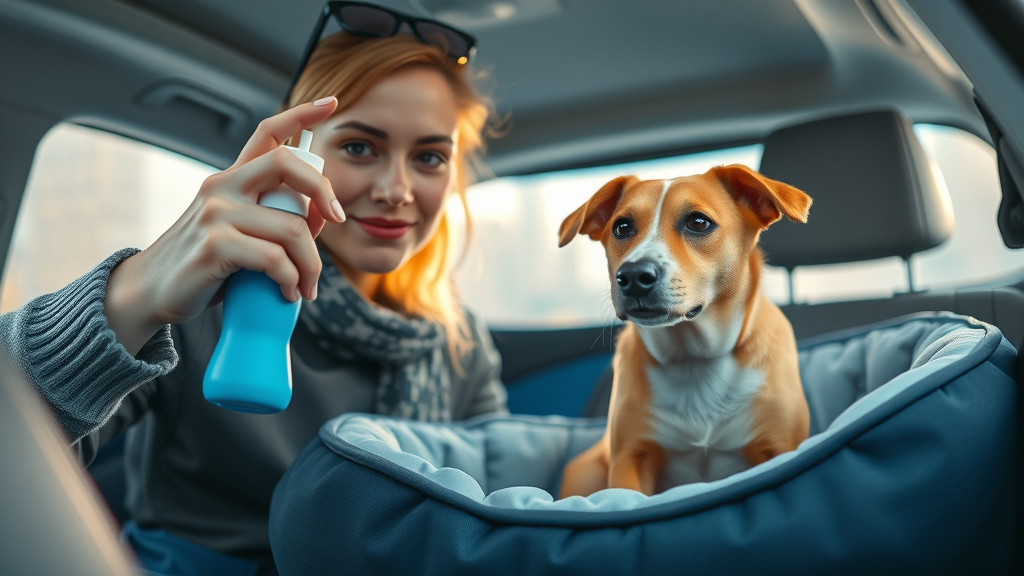
Consistency and gentle exposure are the most powerful tools for changing how your dog feels about car travel . Always reward calm behaviors and never force a frightened pup on a long drive. Instead, pair each exposure with a reward—whether it’s a favorite treat or soothing words—so that riding in the car becomes less scary and more enjoyable with each session.
Popular Dog Car Products for Calmer Car Travel
Dog Car Accessories to Reduce Stress and Ensure Safety
-
Car dog seats, seat belts, and barriers: These products keep your dog in the car secured, reducing distraction and minimizing injury risk in case of sudden stops.
-
Chew toys and comfort items for travel: Offer familiar chews or soft toys to help your dog relax and pass the time comfortably during a car ride .
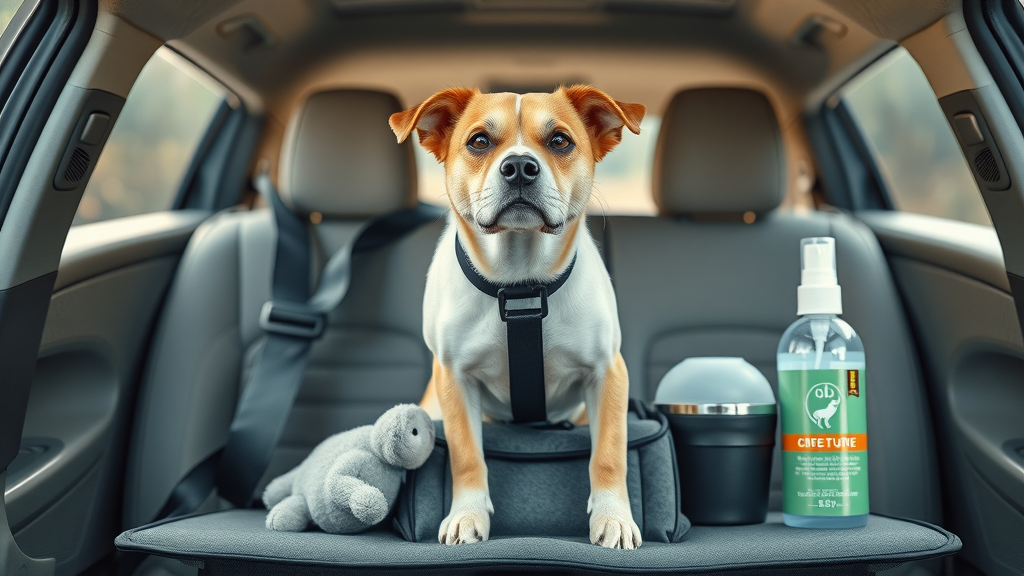
Using quality car accessories is a simple way to change how your dog feels during car travel. Whether it’s a secure harness, a plush booster seat, or fun distraction toys, the right products can bridge the gap between stress and enjoyment during even the longest road trip .
Recommended Calming Dog Car Products
|
|
|
Top-Rated Anxiety-Reducing Products for Car Rides |
|
Product |
Purpose |
Key Features |
|---|---|---|
|
Pheromone Sprays |
Reduces travel anxiety |
Natural calming agents, easy to use |
|
Seatbelt Harnesses |
Ensures safety |
Adjustable, padded, easy to clip in back seat |
|
Booster Dog Seats |
Comfort and view |
Raises small dogs, padded for support |
|
Calming Shirts |
Gentle pressure for security |
Swaddling design, machine washable |
|
Interactive Chew Toys |
Distraction during travel |
Durable, safe materials, keeps dog engaged |
Teach Your Dog to Enjoy the Ride: Positive Conditioning for Car Travel
Step-by-Step Guide: Helping Your Dog Love Car Rides
-
Short, positive rides to favorite places: Not every trip should be to the vet! Start by driving to places your dog enjoys, fostering excitement about car rides .
-
Reward calmness with treats at each stage: Every success—entering the car, sitting quietly, peaceful rides—should earn your dog praise, a treat, or a gentle pat.
Building a confident traveler takes time. Begin with relaxed, short car rides —simply sit in the car together, then drive around the block, and build up slowly. Always finish the session on a positive note, even if that means cutting a drive short to ensure the experience stays enjoyable. Over several positive sessions, you’ll teach your dog that car travel is not just safe, but fun!
When to Seek Professional Training for Car Anxiety
If you’ve tried all of the above and your dog remains highly stressed or refuses to enter the car, it may be time to seek professional dog training . Certified trainers and animal behaviorists can provide personalized programs that combine positive reinforcement, desensitization, and advanced anxiety management. Severe cases of car anxiety may also require input from a veterinarian for possible medical or alternative interventions.
How Do I Calm My Dog During Car Rides? Advice from Veterinarians and Trainers
“For dogs with severe travel anxiety, consult your veterinarian before giving any medications and consider a certified trainer for long-term solutions.” — Dr. Jane Smith, DVM
-
Safe calming aids and their use: Only use vet-approved supplements or prescription medications, always following your vet’s recommendations for dose and frequency.
-
Expert tips for handling serious motion sickness: Keep a log of triggers and symptoms, try anti-nausea remedies early, and provide your vet with details for targeted advice.
Veterinarians recommend a combination of behavioral modification, environmental changes, and, for severe cases, safe medication or calming supplements. Never give your pup over-the-counter meds meant for humans or random herbal remedies without a vet’s input. The best results come from a patient, systematic approach using both science-backed products and expert dog trainer support for lasting change.
PAW: How to get a dog to calm down in a car?
Answer: Training, gradual exposure, comfort items, and maintaining a calm environment help your dog relax in the car.
The secret to calming a nervous pup is consistent training, positive associations, and making every aspect of the car ride reassuring and predictable. Break travel into baby steps, reward confidence, and always foster a peaceful atmosphere inside the car.
PAW: What can I give my dog to calm him down for car rides?
Answer: Consult your vet for safe supplements, prescription medications, or natural calming treats designed for car rides and travel anxiety.
Vet-approved chews, anti-anxiety shirts, or pheromone sprays can make a difference, but always talk to your veterinarian first. Never use human medications or unproven products without guidance to ensure your dog's safety and comfort.
PAW: Why does my dog go crazy when riding in the car?
Answer: Overstimulation, fear, motion sickness, or excitement are common causes. Establishing routine and addressing underlying anxiety can help.
Dogs often react to the novelty, sights, and sounds of car rides . Building familiarity, using positive reinforcement, and improving comfort can transform even the most hyperactive traveler into a calm companion.
PAW: How to stop a dog from crying in a car while driving?
Answer: Ensure your dog is comfortable, use calming products, provide positive distractions, and slowly acclimate your dog to the experience.
Introduce car rides gradually, comfort your pup with favorite items, and reward calm behavior. Over time, these steps will reduce whining and make car trips more enjoyable for both of you.
Frequently Asked Questions About How Do I Calm My Dog During Car Rides?
Is driving stressful for dogs?
Yes, driving can be stressful for some dogs due to motion, unfamiliar sounds, or past negative experiences. Gradual positive exposure and using comfort items can help reduce their stress during car rides .
How do I know if my dog is sick from the car?
Look for signs like excessive drooling, yawning, whining, restlessness, or vomiting. Puppies are especially prone to car sickness , but most dogs can overcome it with the right support and gradual exposure to car travel .
Are some dogs more prone to travel anxiety?
Yes, dogs with limited socialization, certain genetic predispositions, or past trauma are more likely to develop travel anxiety . Early, positive experiences can help prevent long-term issues with car rides .
Can CBD or natural supplements help my dog's car anxiety?
Some dogs benefit from vet-approved CBD or natural calming treats, but only use products specifically designed for pets and consult your veterinarian for dosing and safety information.
Key Strategies for Helping Your Dog Enjoy Car Rides
-
Gradual positive exposure reduces travel anxiety
-
Secure restraint and comfort items increase safety and ease
-
Avoid meals before trips to minimize car sickness
-
Vet-approved calming aids help with severe anxiety
-
Consistent rewards build trust and a positive association with car rides
Love Pets? Subscribe for More Expert Dog Care Tips
🐾 Love pets as much as we do? Get the best tips, treats, and tail-wagging stories delivered monthly. 👉 Subscribe to our newsletter and never miss a bark or purr!
Conclusion
Start small, stay positive, and reward your dog’s bravery—soon, both you and your pup will look forward to every car ride together.
To further enhance your understanding of calming dogs during car rides, consider exploring these authoritative resources:
-
The American Kennel Club’s article, How to Keep Your Dog Comfortable During Car Rides , offers expert advice on providing comfort items, treating motion sickness, and additional tips to ensure a pleasant journey for your canine companion.
-
The Dodo’s guide, Dog Car Anxiety: Symptoms, Treatment And Training Tips , provides insights into recognizing symptoms of car anxiety, treatment options, and training tips to help your dog feel more at ease during travel.
These resources offer valuable insights and practical tips to help your dog enjoy stress-free car rides.
 Add Row
Add Row  Add
Add 




Write A Comment